- Home
- Jane Peart
A Montclair Homecoming
A Montclair Homecoming Read online
Books by Jane Peart
The Brides of Montclair Series
Valiant Bride
Ransomed Bride
Fortune’s Bride
Folly’s Bride
Yankee Bride/Rebel Bride
Gallant Bride
Shadow Bride
Destiny’s Bride
Jubilee Bride
Mirror Bride
Hero’s Bride
Senator’s Bride
Daring Bride
Courageous Bride
A Montclair Homecoming
The Westward Dreams Series
Runaway Heart
Promise of the Valley
Where Tomorrow Waits
A Distant Dawn
Undaunted Spirit
The American Quilt Series
The Pattern
The Pledge
The Promise
ZONDERVAN
A Montclair Homecoming
Copyright © 2000 by Jane Peart
All rights reserved under International and Pan-American Copyright Conventions. By payment of the required fees, you have been granted the non-exclusive, non-transferable right to access and read the text of this e-book on-screen. No part of this text may be reproduced, transmitted, downloaded, decompiled, reverse engineered, or stored in or introduced into any information storage and retrieval system, in any form or by any means, whether electronic or mechanical, now known or hereinafter invented, without the express written permission of Zondervan.
ePub Edition August 2009 ISBN: 978-0-310-86550-6
Requests for information should be addressed to:
Zondervan, Grand Rapids, Michigan 49530
* * *
Library of Congress Cataloging-in-Publication Data
Peart, Jane.
A Montclair homecoming / Jane Peart.
p. cm. — (Brides of Montclair; 15)
ISBN: 0–310–67161–2
1. Women artists—Fiction. 2. Hospitals—Fiction. I. Title.
PS3566.E238 M6 2000
813'.54—dc 21 99–088527
CIP
* * *
All rights reserved. No part of this publication may be reproduced, stored in a retrieval system, or transmitted in any form or by any means—electronic, mechanical, photocopy, recording, or any other—except for brief quotations in printed reviews, without the prior permission of the publisher.
Table of Contents
Title Page
Copyright Page
Part 1
chapter 1
chapter 2
chapter 3
chapter 4
chapter 5
chapter 6
chapter 7
chapter 8
chapter 9
chapter 10
chapter 11
chapter 12
chapter 13
chapter 14
chapter 15
Part 2
chapter 16
chapter 17
chapter 18
chapter 19
chapter 20
chapter 21
chapter 22
chapter 23
chapter 24
chapter 25
chapter 26
chapter 27
chapter 28
Montrose Family Tree
Cameron Family Tree
About the Publisher
Share Your Thoughts
A Note from the Author
WITH THIS BOOK my Brides of Montclair series comes to a close. Unless I were to write a novel about each character, it would be impossible to satisfy all of the specific questions readers have asked over the past fifteen years. Still, I hope at least some of them are answered.
My original intention in writing about the Montrose and Cameron families was to show the personal impact of the historical events of our country on families, relationships, individual lives. I tried to make these stories interesting and to create memorable characters. I never imagined that these books would touch hearts in such meaningful ways, as so many of you have written to tell me they have. These letters have been enormously encouraging and inspiring. I am deeply grateful.
I think we all hope to find the purpose for our life. I thank God every day for giving me work I love and using it in whatever way he chooses.
Thank you for your loyal readership.
Sincerely,
Jane Peart
Part 1
chapter
1
DR. EVAN WALLACE ripped off his latex gloves and tossed them into the waste receptacle. He stepped back from the operating table while the anesthetized patient was lifted onto the gurney, its side rails were adjusted, and the patient was wheeled away to recovery.
He pulled down his surgical mask and raised his strong-featured, deeply tanned face up to the balcony of the fourth-floor operating room, where a group of surgical residents, medical students, and nurses had been observing the surgery. His keen blue eyes scanned the expressions of those leaning forward against the railing.
“Any questions?” he asked. He waited a full minute. When none were raised, Dr. Wallace spun on his heel and left.
After he disappeared through the swinging door, a murmur circulated through the assembled audience—awed comments, complimentary remarks. Watching Dr. Wallace was always an extraordinary experience. The fact that nobody seemed to have a question was due mainly to the fact that while his hands moved he explained each detail of the intricate procedure. When it was completed, there remained nothing but admiration and respect for the surgeon’s skill.
In the corridor outside, the doctor walked toward the waiting room to speak to the relatives of the patient on whom he had just operated. As he passed the nurses’ station with only a brief nod, Ginny Stratton exchanged a significant glance with another O.R. nurse.
Dr. Wallace was an enigma on the floor. He was considered cold, aloof, self-absorbed, detached. He was courteous enough, but he never indulged in small talk or kidding with the nurses at the desk when he stopped to pick up a patient’s chart or write orders. No one disputed that he was a dedicated doctor, but in the nurses’ opinion he lacked warmth and a sense of humor.
He did not seem to have any close friends among the other doctors on staff, nor did he attend any of the hospital-sponsored social events. If he had a private life—and there was much speculation about this—no one had a clue. All they knew was that Dr. Wallace was thirty-six, single, and drove a red Porsche.
Twenty minutes after Dr. Wallace walked out of the operating room, a yellow cab swerved into the hospital driveway. With a squeal of brakes it came to a jolting stop at the front entrance. Its rear door opened and a slender young brunette emerged, struggling with a large, black artist’s portfolio.
Joy Montrose’s budget rarely included a taxi. Her usual mode of transportation was her clunky, small economy car or her three-speed bike. However, this morning was special. Today, September 8, 1980, was important. She couldn’t risk being late for this interview that might change her whole life.
The driver flipped the meter lever and turned to collect his fare. Joy counted out the bills carefully. So what, she thought, if it meant lunch would be a carton of yogurt for the next few weeks? If she got this job, it would be worth it.
After the cab roared off, she stood for a minute looking up at the U-shaped structure, its two wings projecting like giant arms. Good Samaritan Hospital stood on a hilltop overlooking the Ohio Valley and the city of Middleton. On its staff were some of the nation’s best-known health professionals. It had become a symbol of hope to all the sick and suffering who thronged through its doors for help and healing. Patients from all over the United States as well as from other countries came seeking the most moder
n treatment, care, and possibly a cure. It had a reputation as being a place where miracles sometimes took place.
Joy’s gaze moved over to the pentagon-shaped addition, where the morning sun glistened dazzlingly on the windows— the new visitors’ solarium in the surgery wing. Her heart hammered. Today she was presenting her paintings to the committee that would make the final selection of the artist to paint a mural for its walls.
A citywide contest had been held and, much to Joy’s astonishment, she had made the final cut. Although she knew she was presenting samples of her very best work, she also knew that the competition among the finalists would be keen. It was the chance of a lifetime—albeit a somewhat slim chance. Joy drew a long breath, shifted her portfolio more firmly under one arm, and went up the hospital steps.
Approaching the wall of plate glass leading into the lobby, she saw herself reflected. Today she had carefully “dressed for success.” She wanted to give the impression of a serious professional, not a hippie artist. She hoped her simple blazer, skirt, and high-heeled boots projected that image. Her shiny brown hair, usually worn in a braid or ponytail, was swept into a French twist. Despite her efforts, she knew it was hard to look sophisticated at the age of twenty-three. She reminded herself again that the main thing was not her appearance but what was contained in her portfolio.
Joy pushed through one of the doors and walked into the huge lobby. The walls were painted in pastel shades, and vinyl armchairs were placed in conversational groupings around tables upon which current magazines were fanned out. Brass planters filled with lush, green philodendrons provided a backdrop.
Although her experience of hospitals was limited, it was not what she had expected. She had assumed that in a hospital with a reputation like Good Samaritan’s there would be more frantic activity, such as she’d seen on TV dramas.
There was no sense of panic or urgency among those milling about. As Joy glanced around, she noted that the overall atmosphere was one of cheerful calm. There was no sense of unusual hurry. People wearing white-and-green jackets moved with brisk efficiency across the polished linoleum floor, going about their professional duties.
Across the lobby a bank of elevators was in constant use, with overhead lights flashing, doors soundlessly sliding open and shut, an ongoing parade of people flowing in and out. There were neon-lit arrows and signs: “Admittance,” “Cafeteria,” “Gift Shop,” “X-Ray,” “Radiology.”
Joy stood uncertainly for a moment. Then, seeing a circular desk over which hung a sign that read, “Information,” she headed in that direction.
The clerk behind the counter told her that the mural selection committee was meeting in the conference room on the fourth floor. Joy glanced at a wall clock. It was nearly a quarter to ten. Very soon all her painstaking preparation and hopeful prayers were going to be put on the line, her work laid out for inspection, critique, comment, and possibly rejection.
Joy prayed for composure. Whatever happened was okay, she told herself. But the truth was, this particular project had spurred her creative energy in a way nothing before had. She honestly believed that her theme for the mural, “The Healing Miracles of Jesus,” was inspired. It had come to her so clearly. What better idea to convey to anxious hearts in the hospital’s waiting room than God’s message of faith, hope, and healing?
Joy adjusted the strap of her shoulder bag, juggled the portfolio again, and walked over to the elevators.
She pressed the up button, then stepped back into the group of those waiting. A moment later the elevator door opened. Gripping her portfolio, Joy started forward and collided headlong into someone.
The portfolio was knocked from under her arm. She made a futile grab for it, but it went sliding across the polished floor. At that moment she heard a man’s voice say, “Sorry. That yours?”
“Yes,” she said, hurrying to get it at the same time he did. As she bent to pick it up, they cracked heads. Both straightened up and stepped back, regarding each other warily.
“Are you all right?” he asked.
Momentarily dazed, Joy saw the man she had bumped into with such force. Of medium build, wearing a tweed jacket, he had closely cropped sandy-gray hair and was staring at her with startlingly blue eyes in a tanned face. A marvelous face to paint, was her irrelevant thought. Except at the moment he was frowning—scowling, actually.
“No…I mean…yes. I’m okay.” She rubbed her forehead doubtfully.
He picked up her portfolio. “No damage, I hope?”
“I don’t think so. It’s pretty sturdy.”
“Well, here you are,” he said and handed it to her.
“I’m sorry; it was my fault.”
“No problem,” he said curtly.
“I wasn’t looking. I was—,” she murmured. But she didn’t get to finish, because he was already striding across the lobby. Somewhat taken aback by the incident, she watched the trim figure go out through the glass entrance door, then saw him walk toward the section of the parking lot marked “Reserved for Physicians.”
At the sound of the elevator doors opening again behind her, Joy quickly pulled herself together and tried to focus on the interview ahead. She stepped inside, and at its upward swoop her stomach lurched. Was it from nervousness, or from dizziness caused by the sharp whack on the head she had just received?
In the parking lot Dr. Wallace turned the key in the ignition, starting the powerful engine of his car. He felt unusually lightheaded. That was a nasty crack on the head he’d taken in the lobby. He rubbed his forehead ruefully. He’d probably given one, too, for that matter. That girl had been as startled as he had at their impact. Her eyes had been wide and dark— she had looked like a deer caught in headlights. Pretty, small, slender. He hoped he hadn’t hurt her.
He squinted in the sunlight, reached for his dark glasses, still feeling a little dizzy. Perhaps he should get something to eat, he thought. After all, he’d been up since five that morning and had been operating since seven. What he needed was some breakfast. Coffee, at least. With the meeting at ten o’clock, there wasn’t time for much more. Why Dr. Fonteyne, the chief of staff, had asked him to be on the selection committee to choose the artist for the new solarium mural, he didn’t know. What do I know about art or artists? he thought. In his opinion, medicine and art couldn’t be farther apart. Irritated, he shifted into reverse and backed out of his parking space.
In admissions the office manager, Clare Morgan, looked up from her desk as Sister Mary Hope, a member of the hospital ministry from the chaplain’s office, poked her head in the door. The nun was a diminutive woman with shiny hair cut in bangs across her forehead, sparkling blue eyes, and cheeks as rosy as a child’s.
“Good morning, Sister,” Clare greeted her.
“Ready?”
Clare tapped her mouth with her pen. “Ready for what?”
“The selection committee meeting for the solarium mural. We’ve got three artist applicants coming in today. Did you forget?”
“I did,” Clare said, nodding. “This place has been a madhouse this morning. I’ll be with you in a minute; just wait while I put these folders in the files.”
Clare was in her fifties, with silver gray hair fashionably styled, brushed back from a face that was attractive and probably had once been beautiful. She had a mouth that smiled easily, a laugh that was infectious. Widowed at forty, she had found herself wealthy and with time on her hands which she did not want to fill with empty luncheons, at the country club, or on the golf course. She had first come to Good Samaritan as a volunteer, filling in wherever she was needed. Since she had helped her late husband, a contractor, in his business, knew accounting, and was familiar with every kind of office machine, she was soon offered a job in admissions when the man who had been holding the position transferred to administration. Since then Clare had improved the efficiency of this important part of the hospital.
In pediatrics Dr. Jean Braden’s beeper went off just as she was coming off rounds. She s
topped at the nurses’ station to take the call. It was her office reminding her of the ten o’clock meeting on the fourth floor. Actually, she was looking forward to it. She was the one who had encouraged Joy Montrose to try for the commission. Joy had decorated the office Jean shared with her husband, Dr. Roy Braden. Their young patients, as well as the children’s parents, had delighted in the nursery-rhyme and fairy-tale characters Joy had painted. The colorful figures seemed to dance happily all around the walls of the waiting room. Jean would like to see Joy get the job. She stuffed the loop of her stethoscope in one pocket of her lab coat and hurried to the elevator.
Glendon McFarland, the architect whose firm had designed the solarium, pulled into the visitors’ parking lot. He glanced at his watch. He’d had to cut short another meeting to make it to Good Samaritan in time, but he hadn’t minded. In fact, he’d been pleased that Dr. Fonteyne had asked him to be part of the selection committee. This morning they would be interviewing prospective artists to decorate the pentagon-shaped solarium. It was crucial which artist would be chosen to paint the murals in the wide panels between the plate glass windows. The wrong one could be a disaster, possibly ruining the beautiful simplicity of his design.
At thirty, Glendon was ambitious and anxious. He had just gone into business for himself after working for a big architectural firm for six years. It had been a big leap, but his duties at the large company had been limited mainly to draftsmanship. The firm, which bid on all the city’s major jobs, hired people right out of architectural school and put them to work immediately. Glendon had suspected that they did this to cut down on competition. New graduates were full of original ideas, innovative plans, yet few had the connections or the money to strike out on their own. After a few years Glendon had become restless, bored, and frustrated at not being able to use his own creativeness. It had been a real coup to have his design win the commission for the city’s prestigious Good Samaritan Hospital.

 Hero's Bride
Hero's Bride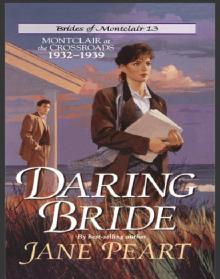 Daring Bride
Daring Bride Runaway Heart
Runaway Heart Promise of the Valley
Promise of the Valley Gallant Bride
Gallant Bride The Pledge, Value
The Pledge, Value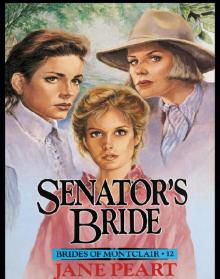 Senator's Bride
Senator's Bride Valiant Bride
Valiant Bride Shadow Bride
Shadow Bride Destiny's Bride
Destiny's Bride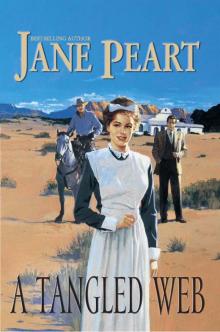 A Tangled Web
A Tangled Web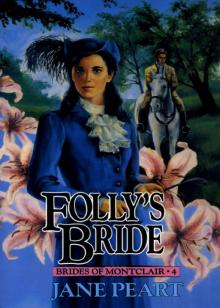 Folly's Bride
Folly's Bride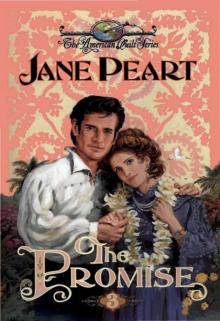 The Promise
The Promise Mirror Bride
Mirror Bride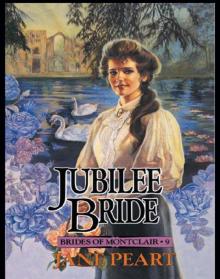 Jubilee Bride
Jubilee Bride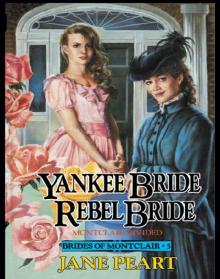 Yankee Bride / Rebel Bride
Yankee Bride / Rebel Bride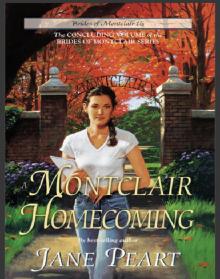 A Montclair Homecoming
A Montclair Homecoming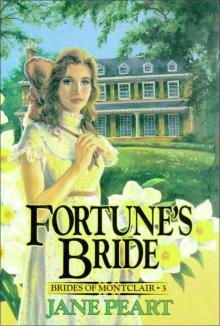 Fortune's Bride
Fortune's Bride Undaunted Spirit
Undaunted Spirit Love Takes Flight
Love Takes Flight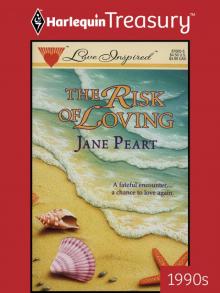 The Risk of Loving
The Risk of Loving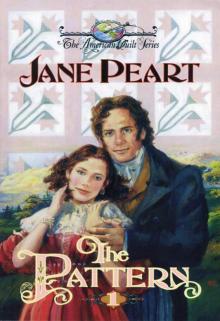 The Pattern
The Pattern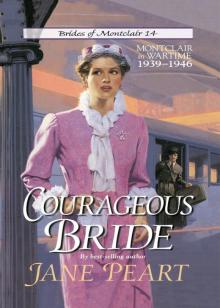 Courageous Bride
Courageous Bride